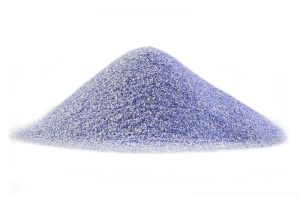Home / News & Blog / Abrasive Blog / Comparison Between Semi-Fragile Alumina and Monocrystalline Alumina Abrasive Grains: When Can Semi-Fragile Alumina Replace Monocrystalline Alumina?
When it comes to abrasive materials, particularly brown fused alumina and white fused alumina, understanding the differences between abrasive grain types is essential for making the right decision. One of the key comparisons within the abrasives industry is between Semi-Fragile Alumina and Monocrystalline Alumina abrasive grains.
With over 20 years of hands-on experience in the abrasive industry, I’ve witnessed firsthand how important it is for manufacturers to understand which abrasive grain will deliver the best performance while optimizing costs. So, let’s dive into the crucial differences between these two materials and when semi-fragile alumina can serve as a viable alternative to monocrystalline alumina.


Monocrystalline Alumina is known for its exceptional hardness, uniform crystal structure, and ability to maintain sharp edges for extended periods. It is ideal for fine, precise grinding applications where a high-quality finish is required. Due to its high hardness and sharpness, it’s the go-to choice for industries like precision tool grinding, sandpaper production, and other applications where quality and smooth finishes are paramount.
Semi-Fragile Alumina, on the other hand, is designed with a slightly less dense crystal structure. While it is not as hard as monocrystalline alumina, it has an edge in durability for heavy-duty tasks. The material is engineered to break down faster, which means fresh, sharp cutting edges are continuously exposed during use, providing enhanced material removal. This makes it ideal for applications such as metal deburring, surface preparation, and abrasive blasting.
Here’s where the real-world insights come in—making the right choice isn’t always about comparing hardness alone.
Cost Efficiency: Semi-fragile alumina is generally more cost-effective compared to monocrystalline alumina. This makes it the preferred option for industries with tight budgets or large-scale operations where cost efficiency is essential, without compromising too much on performance.
Application Performance: When it comes to heavy-duty material removal, semi-fragile alumina often performs better. Its abrasive properties break down quickly, keeping fresh cutting edges available, making it ideal for tasks like rough grinding and metal surface preparation. Conversely, monocrystalline alumina excels in fine grinding, where precision and sharp edges are critical.
Precision and Finish: For fine finishes, monocrystalline alumina outperforms semi-fragile alumina. Applications that require smooth surfaces or fine tolerances, such as polishing delicate parts or grinding precision tools, will benefit from monocrystalline alumina’s sharp, durable edges.
There are several instances where semi-fragile alumina can serve as an excellent alternative to monocrystalline alumina.
Heavy Material Removal: If your application requires fast material removal and you’re working with coarse grinding or rough metal surfaces, semi-fragile alumina can outperform monocrystalline alumina. This is especially true for abrasive blasting and surface preparation tasks. Semi-fragile alumina’s quick breakdown allows it to keep cutting effectively without the cost of using high-performance monocrystalline alumina.
Rough Surface Applications: For metal deburring, rust removal, or surface finishing, semi-fragile alumina provides a good balance of performance and cost-efficiency. It’s perfect for grinding large, irregular surfaces where precision is not the main priority.
Cost-Sensitive Operations: Semi-fragile alumina is a great substitute in environments where cost control is crucial but where the abrasive properties of monocrystalline alumina aren’t absolutely necessary. Applications such as coarse sanding or industrial cleaning can often use semi-fragile alumina without compromising too much on quality.
Hybrid Abrasives: A growing trend in the abrasives industry is the development of hybrid abrasives, combining both semi-fragile and monocrystalline alumina. These composite abrasives offer the best of both worlds: the cost-efficiency and aggressive cutting of semi-fragile alumina, along with the precision and sharpness of monocrystalline alumina. These materials can be custom-tailored for specific industrial needs and are rapidly becoming popular in grinding and polishing applications.
Sourcing Trends: As global manufacturers continue to source abrasives from more cost-effective regions, semi-fragile alumina has gained traction in emerging markets where cost constraints are critical. However, be mindful that abrasives sourced from lower-cost areas may differ in quality. Always check for ISO certification and quality assurance to guarantee optimal performance.
Testing and Certification: One critical factor to remember when considering whether semi-fragile alumina can replace monocrystalline alumina is the manufacturer’s testing standards. Ensure that your abrasives are thoroughly tested for consistency, quality, and performance under actual working conditions to avoid premature wear or subpar performance.
In conclusion, monocrystalline alumina remains the top choice for precision, fine grinding, and tasks that demand consistent, sharp cutting edges. However, semi-fragile alumina offers an excellent alternative for heavy-duty applications, cost-sensitive industries, and processes where material removal speed is the priority. By understanding when and how to use each abrasive type, manufacturers can optimize performance, reduce costs, and achieve the highest productivity in their operations.